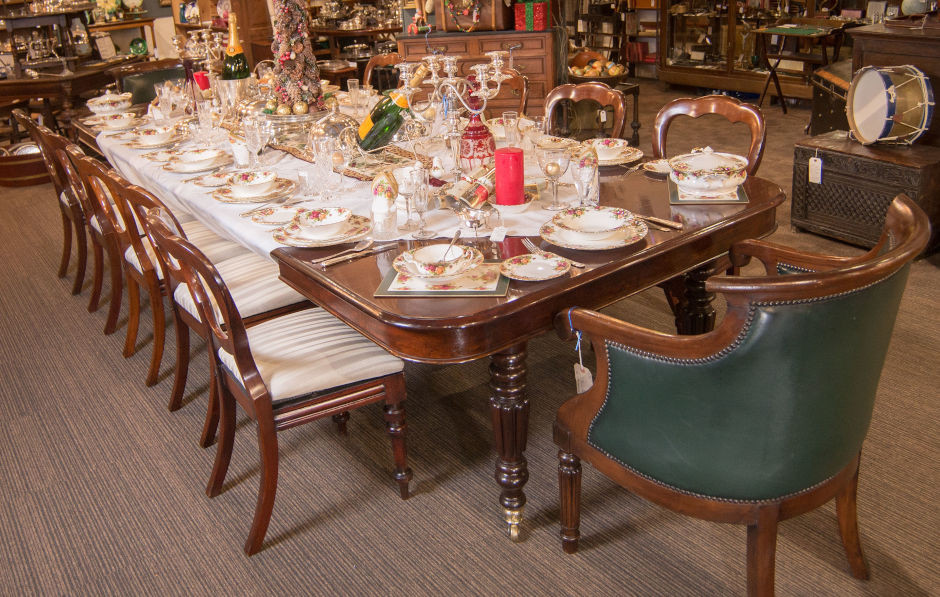
Mixing contemporary designs with antique pieces can create a curated look to any interior and in a dining room, where the table forms the focal point of the space, an antique dining table will add a sense of opulence into a modern setting. But what type of antique dining table will suit your space? And how should you dress the rest of the room?
Antique extendable dining tables
Dating from the mid-17th century, the antique extendable dining table heralded the move towards lighter interior styling. Early examples are often crafted from mahogany, for its dramatic, deep-red colour. Where a larger table is not needed on a daily basis, an extendable dining table is the ideal option for a mid-size room.
Antique drop leaf dining tables
The earliest examples of antique drop leaf dining tables can be traced back to the Elizabethan period and more valuable examples are often crafted from richly-hued woods such as mahogany and cherry. An antique drop leaf dining table is identified by two hinged leaves, one on either sides of a fixed central section. When folded out, the leaves are supported by brackets (rather than legs as with the gate-leg table).
Antique round dining tables
Round dining tables can be found in nearly all historical periods, from the Jacobean era through to the mid-20th century. Available in different sizes and a variety of woods, including oak and rosewood, the round dining table is a versatile choice for the contemporary setting. Unlike a more traditional rectangular dining table, a round one will improve the flow around your space, as well as encouraging conversation around the table as everyone faces the centre with less chance of being left out.
Antique French dining tables
When we think of French antique furniture, we think of two distinctive styles – the ornately adorned pieces of the aristocracy and nobility, and the provincial pieces that were artisan-crafted. The former were designed to impress, crafted from mahogany, maple and walnut, with veneers and elaborate motifs. By stark contrast, provincial pieces are often characterised by a painted finish in muted pastel or cream hues, and are crafted from woods that were available in abundance to the artisans, such as oak, beech and elm.
How to decorate with an antique dining table
The art of combining antique pieces with contemporary items will create an eclectic space that will feel as though it has evolved over time. It will also awaken a deep sense of nostalgia but getting the balance right is a skill. Here are our top tips to help you get it just right.
Consider the proportions of your antique dining table
Far from overwhelming a room, an over-sized piece of furniture can in fact make a smaller space seem much larger. The often-larger proportions of an antique dining table will provide a strong focal point that can be accessorised with contemporary chairs and other accent pieces.
Choose a colour palette to showcase your antique dining table
A neutral colour scheme will not detract from your antique dining table and will allow it to take centre stage. However, if you do prefer colour, don’t be afraid to go bold! One dominant colour can be matched to accessories, and two competing wall colours will add maximum impact.
Flooring options for an antique dining table
If you choose a neutral colour scheme, colour can be introduced via the flooring. An exposed, hardwood floor works well but if you would rather have something softer underfoot, opt for rugs, rather than fitted carpet.
Whether you place metal industrial chairs around your antique French provincial dining table, or marry mid-century design to your mahogany, remaining authentic to the original finish of the piece is important if you want a combination that will be cohesive and not chaotic.
If you are looking to source an antique dining table, a trip to Hemswell will not disappoint! With four buildings filled with the finest pieces, plus two coffee shops, we are the largest antiques centre in Europe. For our overseas clients, we are able to offer virtual tours which allow you to browse pieces of interest accompanied by our Managing Director, Robert Miller.